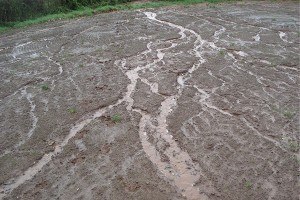Fall Landscaping Care - 6 Steps to Take Right Now
With autumn nearly upon us and winter just past the fall bend, you're probably not spending much time thinking about your lawn. But autumn, with its cooler temperatures and occasional rainfall, is the ideal time to prepare your lawn for next spring. (I know, next spring, really!!!)
Many homeowners think lawns need less care in the fall because the grass grows more slowly. In fact, just the opposite is true. During this time of year, grass is busily absorbing energy, moisture, and nutrients in preparation for a long, dormant winter. Give it a little attention now, and you'll be rewarded with a lush, healthy spring lawn. Just follow these six tips.
Tip #1 KEEP ON MOWING
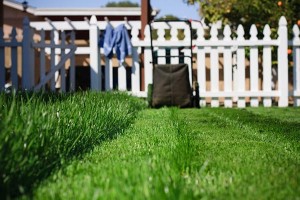 This seems a little self explanatory but it is important. (I’ll admit I’m guilty of ignoring this step in order to take advantage of the last little bit of good weather! ) Continue to water and mow your lawn, as needed, throughout the fall. As fall comes to a close and winter is just around the corner (usually Halloween for all of us in BC), drop the mower's blade to its lowest setting for the last two cuttings of the year. That will allow more sunlight to reach the crown of the grass, and there will be less leaf to turn brown during the winter.
This seems a little self explanatory but it is important. (I’ll admit I’m guilty of ignoring this step in order to take advantage of the last little bit of good weather! ) Continue to water and mow your lawn, as needed, throughout the fall. As fall comes to a close and winter is just around the corner (usually Halloween for all of us in BC), drop the mower's blade to its lowest setting for the last two cuttings of the year. That will allow more sunlight to reach the crown of the grass, and there will be less leaf to turn brown during the winter.
**Note: When you lower your mower blade, remember to do it gradually. If you take off too much of the blades of grass you could do more harm then good and make the lawn weak heading into the cold of winter. Reset the mower blade gradually to prevent any damage.
Tip #2 AERATE THE SOIL
Fall is also an ideal time to aerate your lawn so that oxygen, water, and fertilizer can easily reach the grass's roots. You can rent a gas-powered, walk-behind lawn aerator for about $70 per day. The 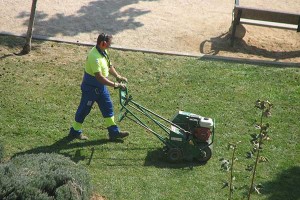 self-propelled machine will quickly punch holes into the soil and extract plugs of dirt. If you've got a very large yard—say, more than 3 or 4 acres—and don't feel like aerating it yourself, hire a landscaping contractor.
self-propelled machine will quickly punch holes into the soil and extract plugs of dirt. If you've got a very large yard—say, more than 3 or 4 acres—and don't feel like aerating it yourself, hire a landscaping contractor.
Tip #3 RAKE THE LEAVES
I know raking leaves is no one's idea of fun, but it's important to remove fallen leaves from your lawn as soon as possible. You can either just go straight for the rake and manually pull up the leaves or you can use a power blower (gas or electric) to blow the leaves into a pile first and then rake the final few and place them in a compost bag. Make sure you don't wait until all the leaves have fallen from the trees to start raking. If you do, the leaves will become wet from rain and morning dew, stick together, and form an impenetrable mat that if left unmoved will suffocate the grass and breed fungal diseases. Fungal diseases are not good for any plant in your yard. 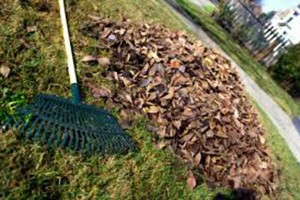
An alternative to raking leaves is to use a lawnmower fitted with a collection bag or vacuum system. These methods are particularly effective if you have a very large yard with many deciduous trees. Regardless of whether you use a rake or a lawnmower, just be sure to remove the leaves before they turn into a soggy, suffocating mess.
Tip #4 FERTILIZE FOR FUTURE GROWTH
Most lawn experts agree: If you fertilize your lawn only once a year, do it in the fall. The reason? Grass leaves grow much more slowly as the weather turns cool, but the grass roots and rhizomes continue to grow quickly. (Rhizomes are the horizontal plant stems that lie just beneath the soil's surface; they produce the blades of grass above and the roots below.) And yes the fertilizer companies don’t necessarily like if you only fertilize once a year...but there are those that do it and there are worse things to do to your lawns. A fall application of fertilizer delivers essential nutrients for the grass to grow deep roots now and to keep nutrients on reserve for a healthy start next spring.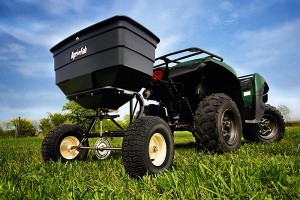
Wait until mid-to-late fall, then apply a dry lawn fertilizer to all grassy areas; be careful not to miss any spots. You could use a crank-style broadcast spreader, but for optimum coverage, consider using a walk-behind drop spreader. It takes a little longer, especially on hilly yards, but a drop spreader provides the best way to apply an even, consistent layer of fertilizer.
Tip #5 FILL IN BALD SPOTS
Autumn is also a great time of year to fix any bare, bald spots in your lawn. The quickest, easiest way to do this is with soil amender, one of our manufactured soils. 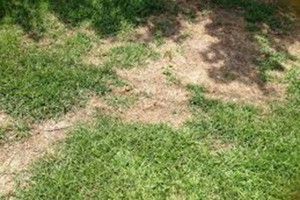
Use a garden rake to scratch loose the soil at the bald spot in your lawn. Then spread a 2-3" thick layer of soil over the area. Hand seed over the soil, lightly compact the mixture, then water thoroughly, and continue to water every other day for two weeks.
If you have so many bald spots that you require a lawn renovation, consider Terraseeding - our process of blowing in quality soil with seed and fertilizer injected directly as it's blown onto your lawn area.
Tip #6 WEED CONTROL
If broadleaf weeds like dandelions have taken over your lawn, now's the time to fight back. Weeds, like most plants, are in the energy-absorbing mode during the fall. They're drinking in everything that comes their way, including weed killers. Apply an herbicide now and the weeds won't return in the spring. Plus you can use bark mulch early next spring on the surrounding landscape to ensure weed suppression is at it's best. 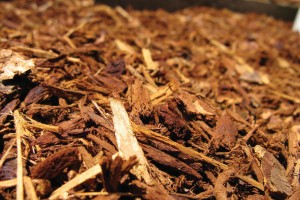
Read the package label before use. Most herbicide manufacturers recommend applying the weed killer during early-to-mid autumn, when daytime temperatures are consistently above 60 degrees Fahrenheit.
We hope you enjoyed the six tips to prepare your lawn for next year. Please feel free to read the original article here, or you can feel free to share this with your friends! Happy fall everyone.
Save

